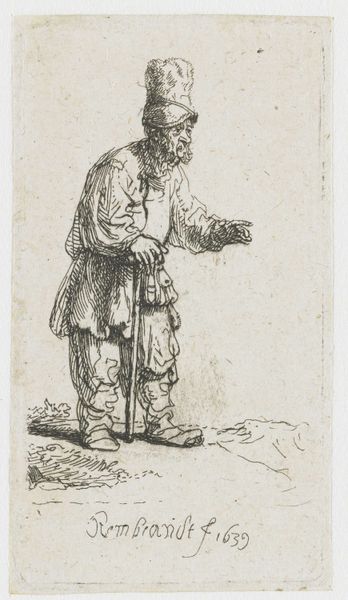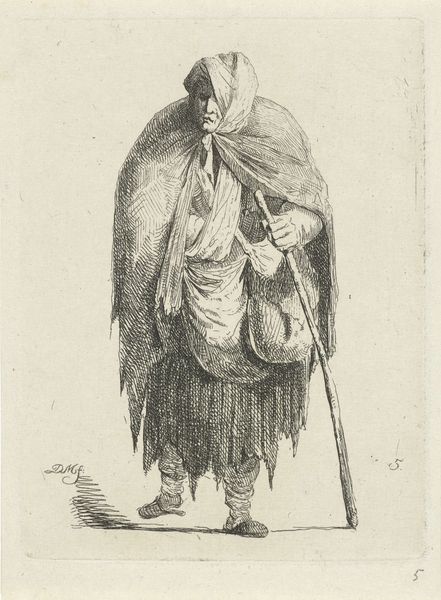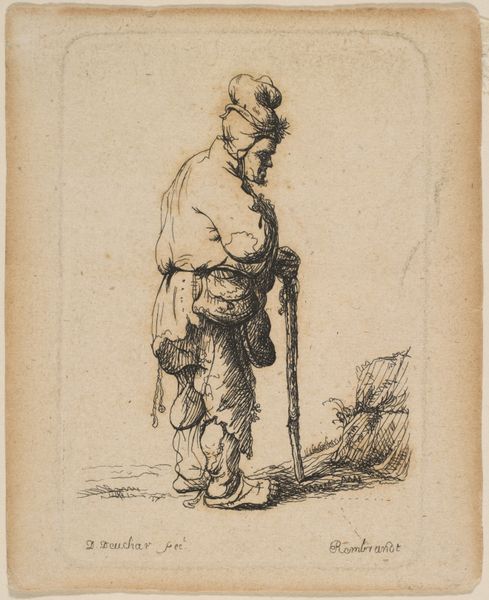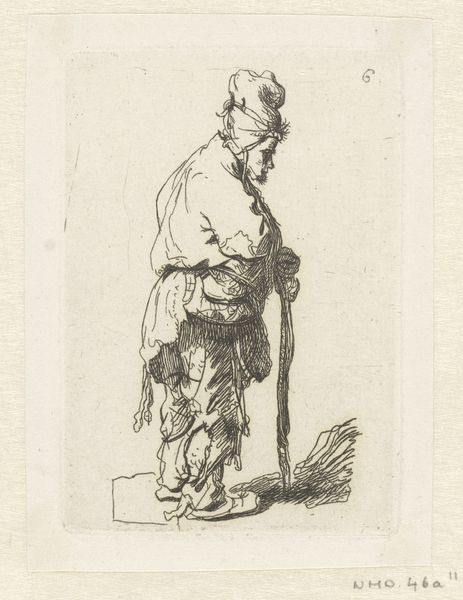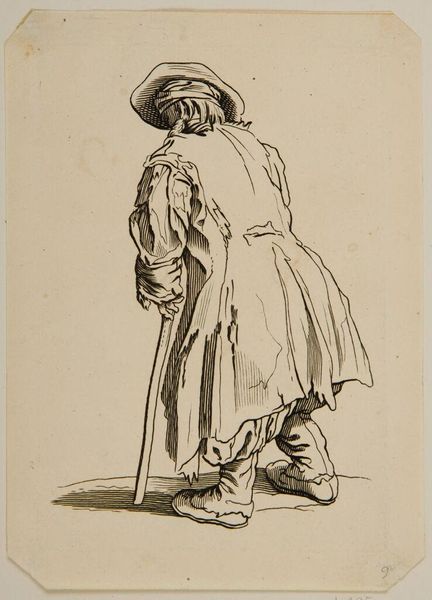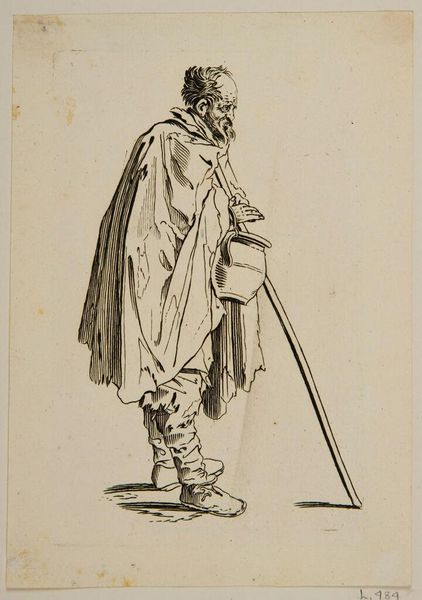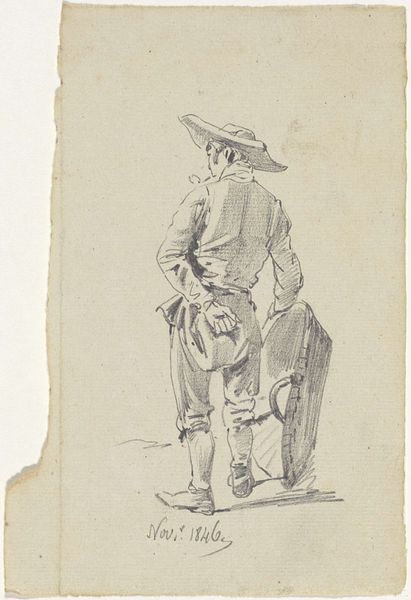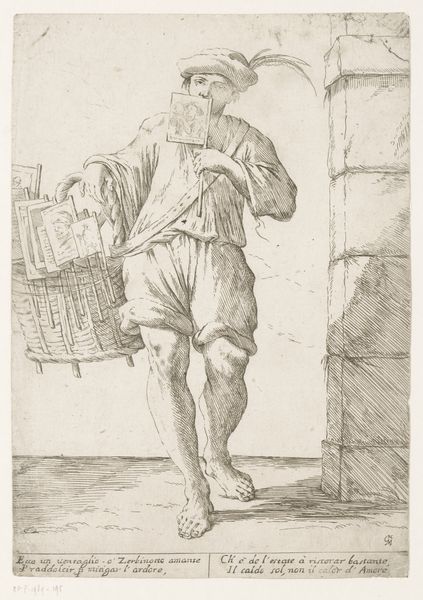
drawing, paper, ink, pen
#
portrait
#
drawing
#
baroque
#
dutch-golden-age
#
pen illustration
#
figuration
#
paper
#
ink
#
pen-ink sketch
#
line
#
pen
#
genre-painting
#
realism
Dimensions: height 120 mm, width 80 mm
Copyright: Rijks Museum: Open Domain
Curator: I am struck immediately by the vulnerability rendered in this figure. The starkness of the lines against the pale paper seems to amplify the man's weariness and isolation. Editor: You’re right. There is a poignant empathy achieved here. This drawing, known as "Old Beggar," is attributed to Frederick Bloemaert and was likely created after 1635. It is currently held in the collection of the Rijksmuseum. Drawn with pen and ink on paper, it epitomizes Dutch Golden Age realism through the genre painting lens. Curator: The artist certainly doesn't shy away from depicting the harsh realities of poverty. Look at the man’s threadbare clothing and bare feet. It seems almost a confrontational level of detail. His facial expression... I see a deep sadness etched into every line, every wrinkle. What would it mean in Dutch Golden Age imagery, the bare feet? Editor: Depicting beggars became a recognizable trend, particularly within Dutch art from this era, serving varying social functions. While some suggest these depictions fostered sympathy and promoted charity, others were deployed as negative commentaries about societal stability and morality during a time when the Dutch Republic experienced rising economic disparities. In some circles, poverty could signal a spiritual deficit. The image as a political object or instrument comes to my mind. Curator: So, this seemingly straightforward depiction of an "Old Beggar" carries layers of social and perhaps religious implications. The basket in his hand, and what looks like rags; these elements, combined with his bent posture, communicate the weight of his existence. But perhaps his clothes were merely rendered with the tropes expected from a poor person, nothing less, nothing more? Editor: Quite right! The “realism” can be highly stylized to send the “right” messages, rather than as an index to lived experience. Still, I find myself wondering what the artist sought to convey beyond mere social commentary. What are we meant to feel? Is it pity? Is it disgust? Is it merely recognition? How were poorhouses and charity regulated in Bloemaert's neighborhood, his own social class? Curator: Maybe the piece invites reflection on our shared humanity. By capturing such raw emotion, perhaps Bloemaert hoped to prompt viewers to confront uncomfortable truths about their society and perhaps, in doing so, catalyze some change. Editor: It makes you ponder about who and what gets represented and valorized, and what gets erased in cultural memory. What seemed like a simple portrait unveils an invitation to a far larger and more urgent dialogue.
Comments
No comments
Be the first to comment and join the conversation on the ultimate creative platform.



